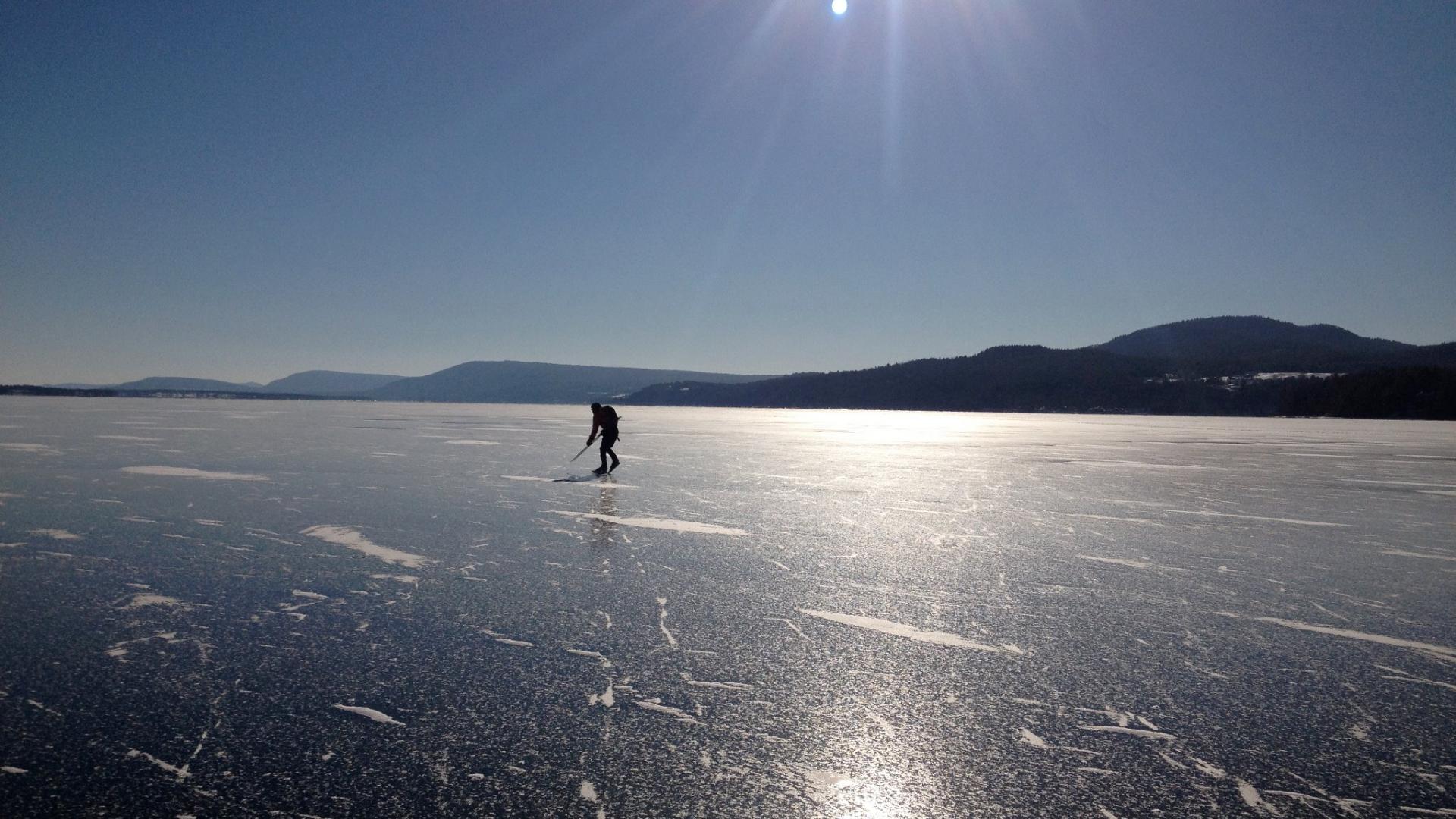It was only a few years ago that I became acquainted with the term Nordic Skating. At the time I think I thought of it as Nordic skiing, only on a frozen body of water, but I have recently become a bit more familiar with this winter sport that is growing in popularity. As a youth, I lived right on the shore of Lake Champlain and winters found my brothers and me on the lake ice. However, I was on figure skates, they were on hockey skates; both had leather boot tops. We breezed around on our own — a rectangle of ice kept clear by shovels. I remember staying out there as long as my toes could possibly stand it. I was happy with the circles. I don’t think it ever occurred to me what fun it would be to simply skate off north, or south, down this vast 125-mile lake.
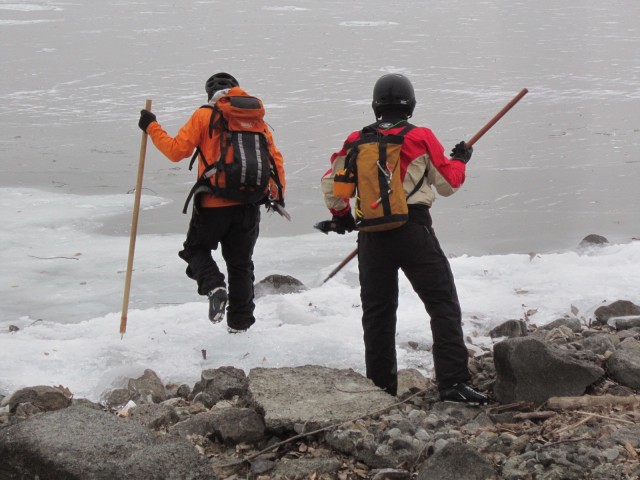
Miles On Ice
A few winters ago I bumped into my friend Kevin Boyle near the Port Henry fishing pier and boat launch. At that time he and a fellow skater were preparing for some Nordic/long-range skating from the pier as conditions were ideal. There was a frozen lake surface as far as you could see, with little snow cover. I watched as they assembled their gear and made their way onto the ice. Not wanting to interrupt their fun I did not ask all the questions that sprang to mind, but simply watched as they made their way onto the ice and gracefully glided away. Some of the questions at that time were: “Why the big stick?” and “What’s in your pack?” and “How are you going to know where the ice may be dangerous?” It was probably best that I kept quiet, sending positive thoughts as they quickly became dots on the ice as the distance grew between us. It sure looked like fun.
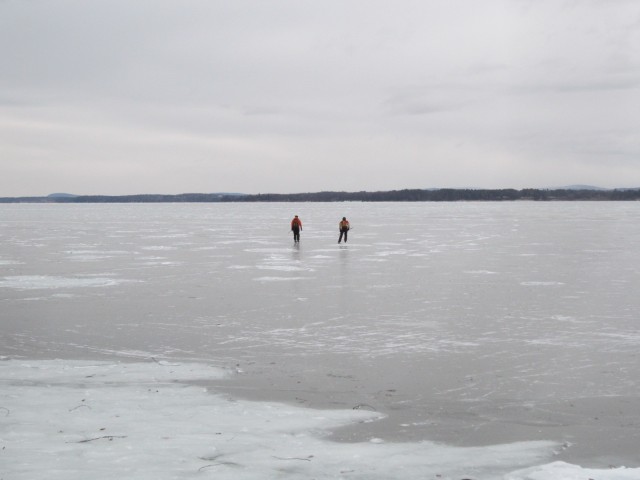
It’s All in the Details
I’ve long admired Kevin as an artist. His skill and expertise in woodworking is jaw-dropping. I have noted that his attention to detail and super-skilled precision are applied to all aspects of his active life as well. In my view, some of his activities involve clear elements of risk far out-weighing the use of the woodworking tools in his shop—for example scaling cliffs, often ice-covered. However, knowing him, I am aware he will not have overlooked any detail to ensure he has a safe, yet enjoyable experience. He applies logic and common sense to everything he does.
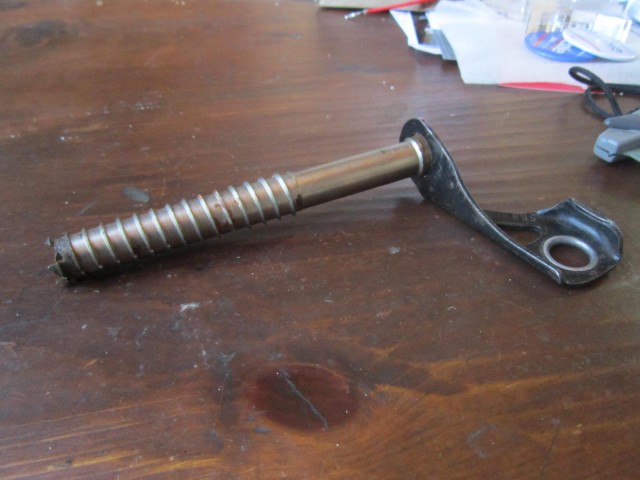
We recently connected to discuss Nordic skating and what he wears, or totes along, to make it a fun adventure, though never entirely risk-free. He’s been Nordic skating for over ten years and from him I learned that this particular type of skating originated in Sweden, maybe 100 years ago. I also learned that the equipment and gear available today can make it a more enjoyable and less risky business. Much of the same equipment used by Nordic skaters can be interchanged with other outside winter/cold water sports. For instance, he uses one of his ice climbing devices to test and measure ice thickness.
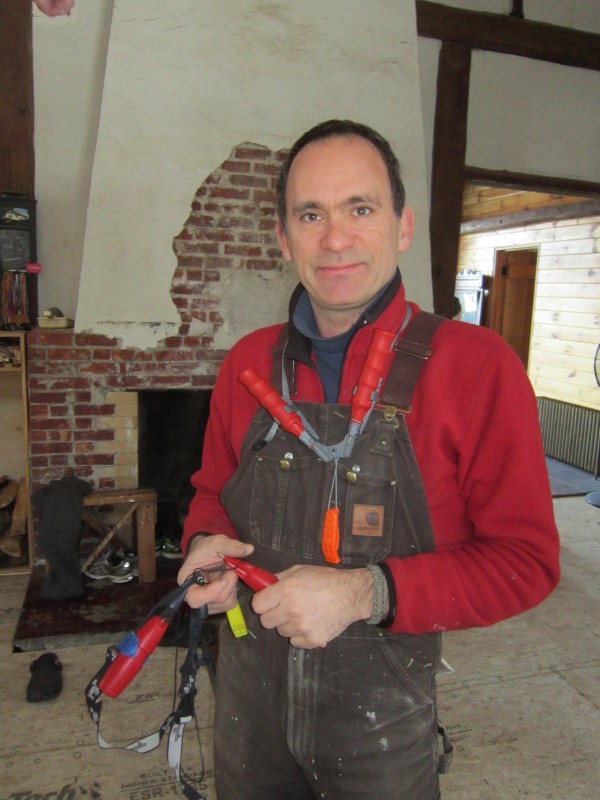
Essentials
Absolutely essential, aside from skates, he informed me, are a set of ice claws. Kevin makes use of a type of claws on an adjustable lanyard that lock together around his neck and rest in the upper chest area when not in use. There are a wide variety of these ice claws available on the market, but he likes the easy access of these locking type if needed. “Well worth the few extra bucks if you ever have to use them.”
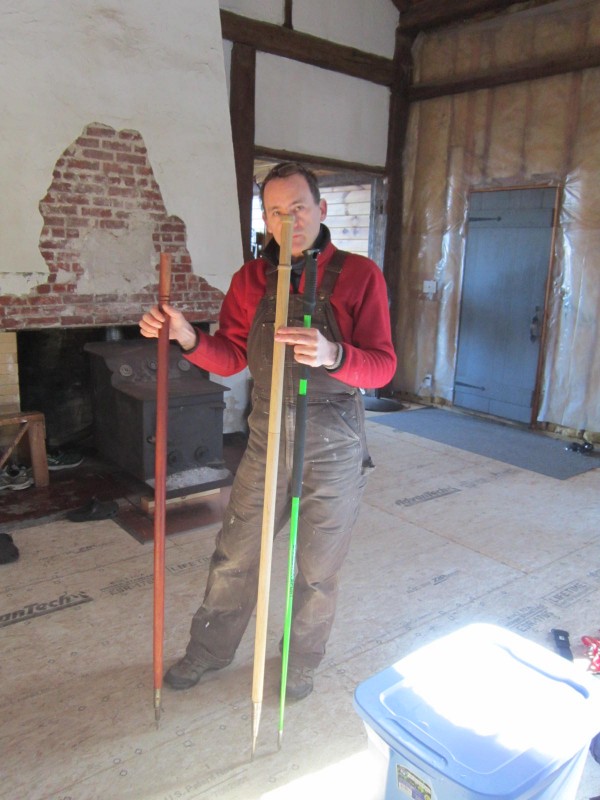
Additional Gear
He showed me his variety of ice testing poles. Some he made himself; one carbide type was a purchase. I hefted it and was surprised how lightweight it was. He told me that a pole was a good idea if anyone wanted to attempt Nordic skating. He explained that the purchased poles come in sets, but he only carries one. “Otherwise they become almost like crutches. You tend to use them both and it inhibits the skating experience.” With his one pole, most often kept diagonally across his body, he periodically reaches out and prods the ice, even during long distance skating when start-out conditions have been ideal. “I also watch for distinctive lines in the ice,” he told me, "they can be indicative of trouble spots.” He keeps an eye out for those visible lines in the ice continually.
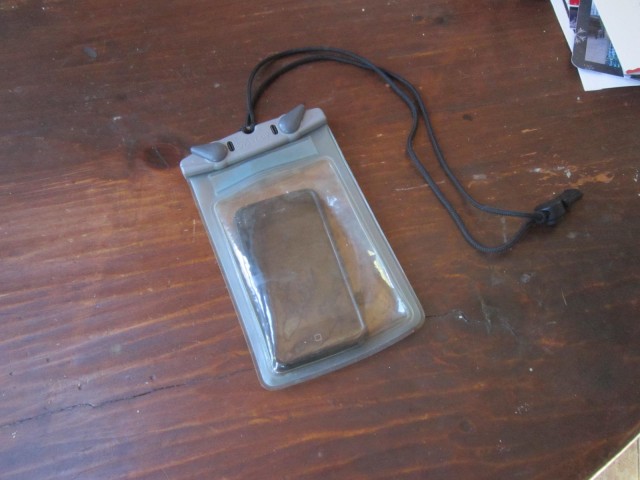
A protective waterproof case holds the cell phone, which he tucks in next to his body to keep from freezing. I hadn’t really thought about cell phones freezing, but they can, and will, I learned. Given an emergency, a frozen phone would have anyone regretting the few ounces of worthless extra weight they’ve toted along — not to mention the inability to reach out for help when most of humanity is warmly tucked some distance away.
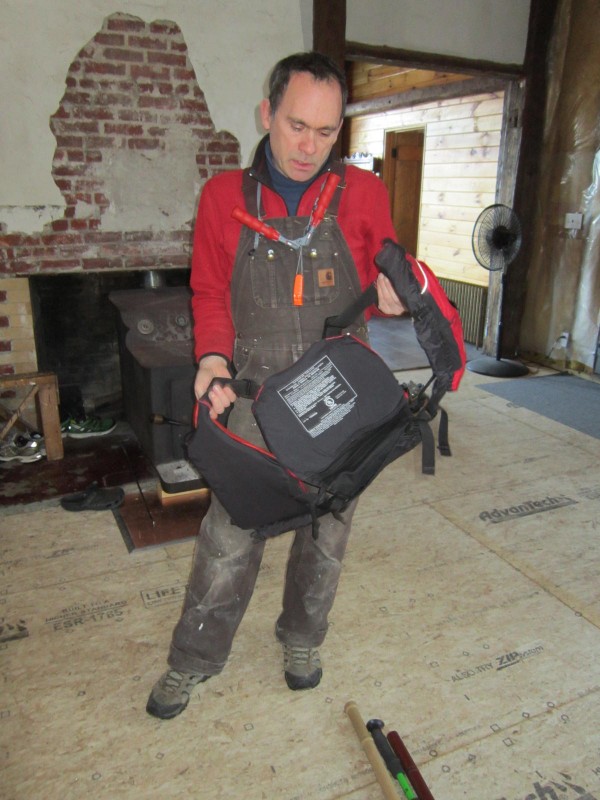
Ideal Protective Equipment
Kevin also always wears a PFD (personal floatation device). His is small and compact, like the kind worn by white water rafters. It was very effective he told me when he happened upon an “in the water” experience. “Nothing above chest level got wet,” he said. “More ice fishermen should wear them.”
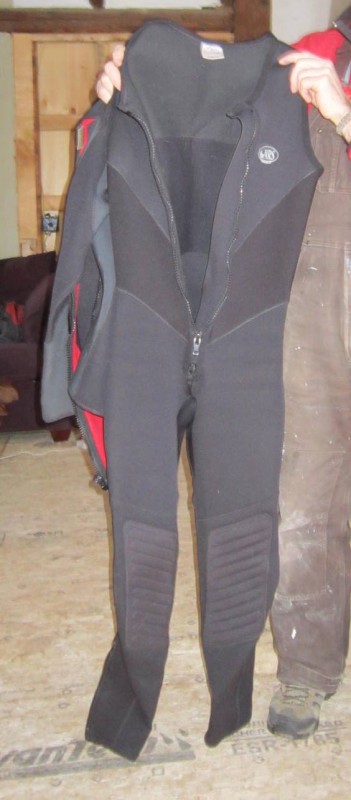
“Ideal, would be a dry suit,” he explained. I had to ask, not being familiar with the term. Dry suits I now know have gaskets at all openings to prevent water from leaking in. The suit he uses regularly is a “Farmer John” (no sleeves) made of neoprene coupled with a neoprene coat. Very lightweight, flexible, and though water may seep in it can be minimal. During his “in the water” experience he found what little water seeped in quickly warmed to body temperature allowing him time to get to safety without a strip-down-change-of-clothes on site. Skaters without a wet or dry suit should carry a change of clothes in the pack, wrapped in sealed plastic that can also contribute to buoyancy.
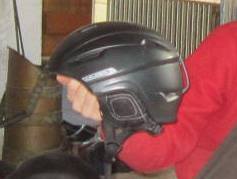
“More injuries come from falls on the ice,“ Kevin informed me. Therefore, he also recommends and wears a helmet. Bicycle helmets don’t provide adequate protection to the back of the head and they are ventilated, therefore his choice is an alpine ski helmet.
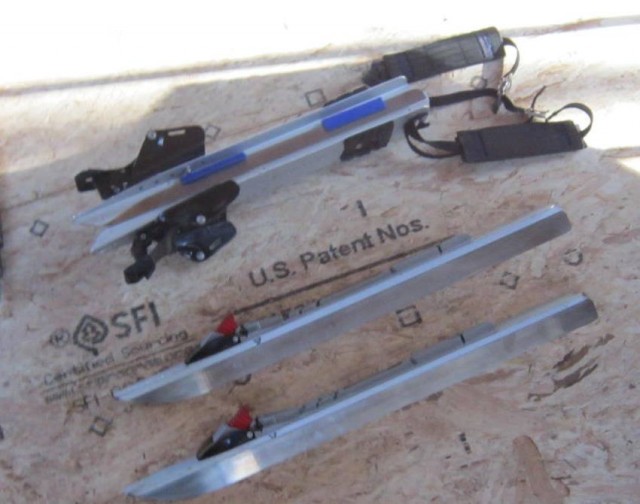
The Skates
I was most impressed with the skates! Long blades, looking sharp enough to carve the roast beast, attach to boots with bindings much like cross-country skis. In fact, Kim, his wife, uses the same boots for both winter sport activities. I thought back to the early days of frozen toes and wobbling along to the rink on the blades, or cooling the backside while sitting in the snow bank lacing on those leather figure skates rink side. These easy on/off blades on insulated boots are a major improvement indeed.
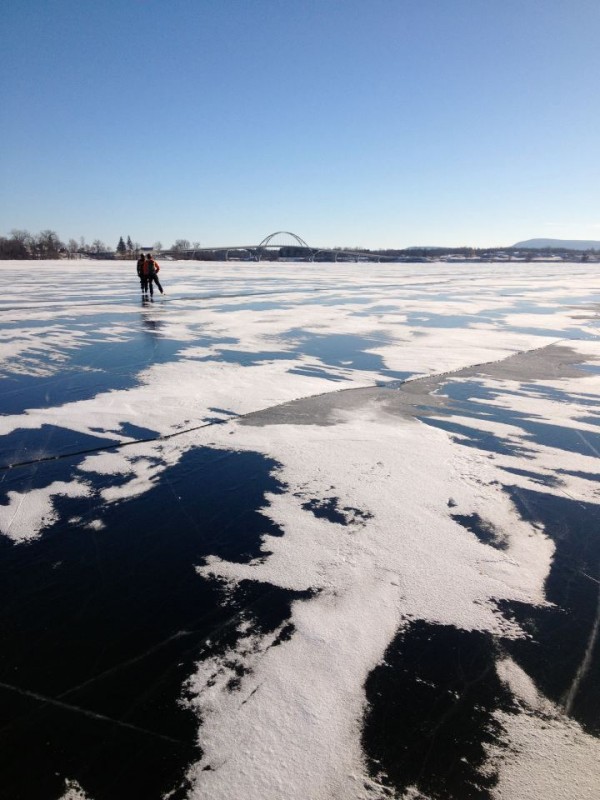
Additional Common Sense
Wise Nordic skaters travel with a buddy, better yet two, and always skate with a rope in their pack to assist a rescue. Kevin has had specific training on how to get out of the ice covered water, which he recommends. He follows a listserve, a group email notification - if you are not familiar, which consistently reports ice condition. This is certainly a consideration for other skaters. He tells me he’s had days when he covered over 40 miles of skating on our Lake Champlain while hitting a speed of 20 or more miles per hour with the right winds. Sounds like a grand time when you are dressed and prepared for a true Nordic skating adventure.

